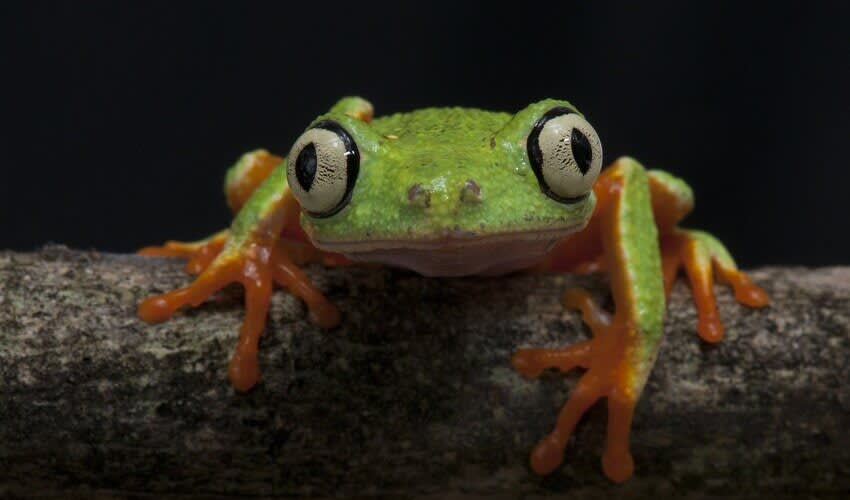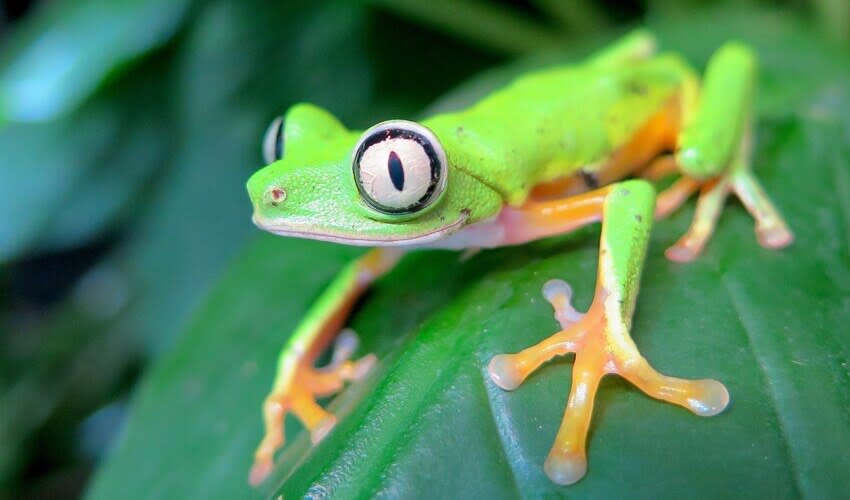Phyllomedusidae – Leaf frogs
True to their name, members in this family resemble leaves in both color and shape
With their miniature bodies, delicate limbs, and webbed digits, leaf frogs possess unique and charming characteristics. They exhibit a rather unassuming mode of movement, preferring to stroll gently rather than leaping about, reserving jumping for moments of imminent danger.
What distinguishes some leaf frog species is their extraordinary ability to adapt their coloration to their activity levels. During the daylight hours, when they are relatively quiescent, their skin takes on a greenish-yellow hue, allowing them to blend into their leafy surroundings seamlessly. However, as night falls and they become more active, their coloration transforms, shifting to a reddish-brown tone. This nightly alteration aids in their nocturnal pursuits, providing camouflage as they hunt.
These remarkable creatures are skilled ambush predators, employing a sit-and-wait strategy to secure their meals. They remain in position, concealed among the foliage, until unsuspecting prey ventures close enough. In a swift attack, they seize their quarry, showcasing their adaptability to a diverse range of hunting techniques.
Leaf frogs boast stable and abundant populations, a testament to their resilience. However, their existence is threatened due to their pet trade popularity. The collection of these captivating frogs for the exotic pet market poses a significant risk to their numbers in the wild, and conservation efforts are crucial to ensure their continued presence in their natural habitats.
Genera in this family
A genus of tree frogs found only in the forests of Mexico


